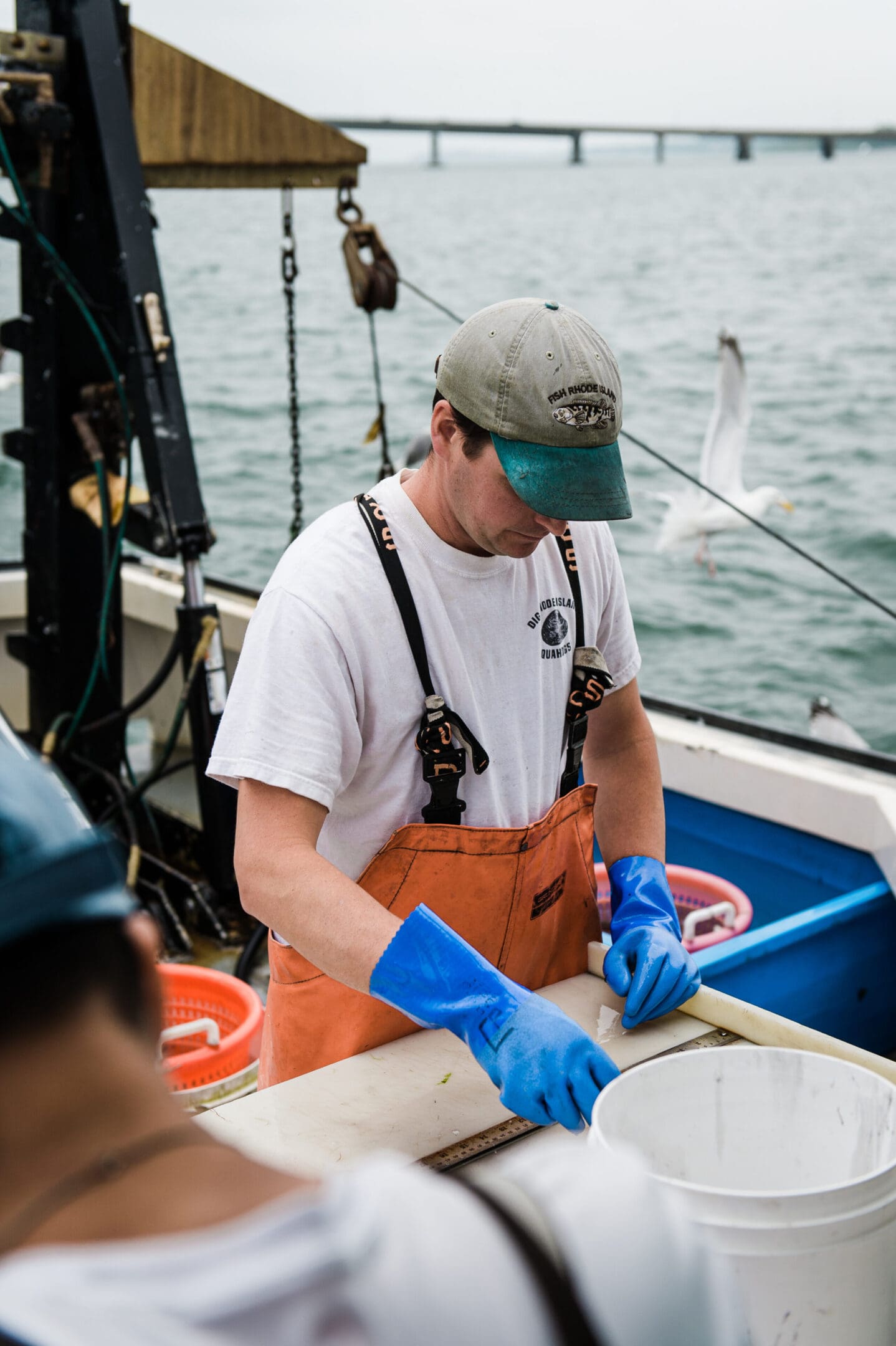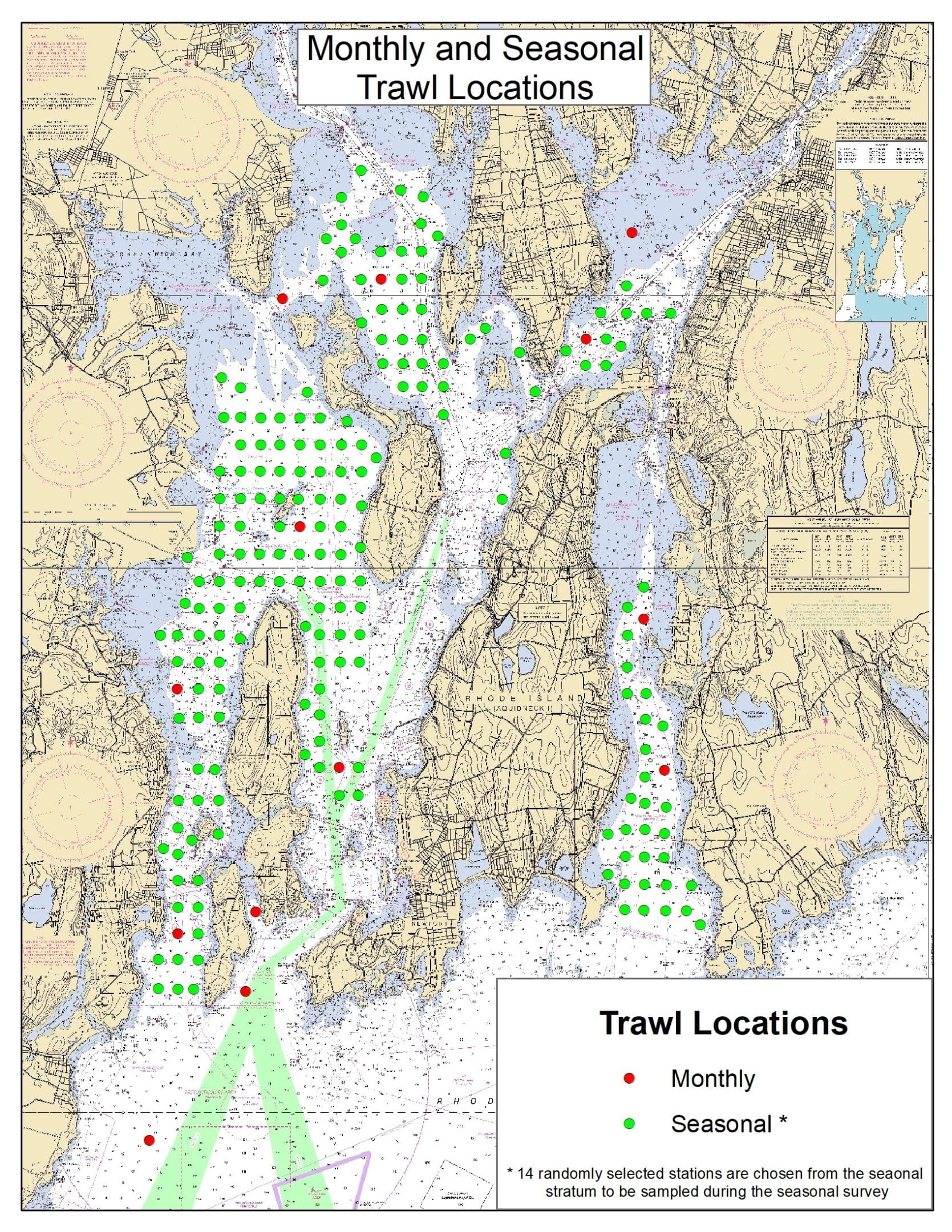The seasonal survey employs a stratified random and fixed design defined by 12 fixed stations in Narragansett Bay, 14 random stations in Narragansett Bay, 6 fixed stations in Rhode Island Sound, and 12 fixed stations in Block Island Sound. The monthly survey includes the same 12 fixed stations in Narragansett Bay and 1 additional fixed station in Rhode Island Sound.
In 2005, the Division replaced the research vessel and survey gear that has been utilized by the survey since its inception. The R/V Thomas J. Wright was replaced with a 50’ research vessel, the R/V John H. Chafee. During the spring and summer of 2005, a series of paired tow trials were conducted using modern acoustic equipment and new nets designed to match the trawl net used by the National Marine Fisheries Service. The results of this experiment were used to calibrate the old and new vessels in order to maintain the continuity of the survey time series. Unfortunately, the new net design was too large for the new research vessel and could not be successfully towed in many of the areas required by the trawl survey. Because of this a new net was designed in the same dimensions as the net previously used for the survey and is used for the trawl survey. By using a similar net design to the previous survey net, the continuity of the survey is able to be maintained, though analysis to confirm this is still pending.
In 2012 new doors were installed on the R/V John H. Chafee. A rigorous calibration experiment was done to calibrate the new trawl configuration with the new doors to the old trawl configuration with the old doors. The analysis has been conducted, but is unpublished at this point. The findings of the analysis were that there were not significant differences in the catch of lobster between the old and new door datasets.



